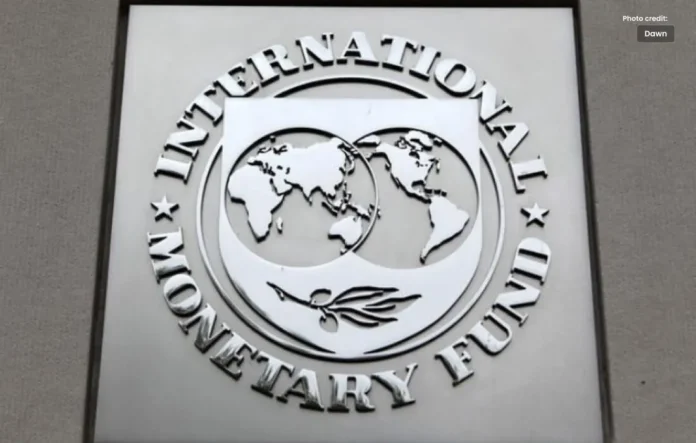Strategies to end clutches of IMF dependency for national liberation.
For nations clutches by the IMF, escaping and achieving economic autonomy has fundamental significance.
The International Monetary Fund (IMF) was established in 1944 to deal with the Great Depression of 1936 and the ravages of World War II.
The main objectives of its establishment were the establishment and security of the global financial system, the promotion of international trade and thereby increasing the income and employment of countries, maintaining the stability of the exchange rate and the members. This includes providing loans to countries in the event of international payments deficits.
Read More Informative Articles In Urdu
To achieve these objectives, the IMF applies its own conditions to lending and periodically publishes its assessment reports that examine the performance of countries and credit rating agencies around the world use these reports.
Do Even other international organizations and countries also provide loans based on the IMF’s assessment report. So this report is very important for any country.
However, success or failure in these review reports depends on how successful a country has been in achieving the goals and conditions set by the IMF.
Conditions of IMF
The relationship between Pakistan and the IMF is very old. We first took a loan from the IMF in 1958 and since then we have received loans 22 times under various agreements.
The current program was launched in 2019 but the deal could not be completed and the country had to wait patiently for its last two episodes. After that, in July of last year, it made a standby arrangement of 9 months to obtain three billion dollars from the IMF.
In the 2019 program, Pakistan was bound to reduce the fiscal deficit, increase the interest rate i.e. apply strict fiscal policies, eliminate subsidies, especially electricity and gas subsidies. , the independence of the state bank (whereby the central bank would be obliged to lend or lend to the government in certain forms), raising electricity and gas rates to the cost of production, increasing tax rates, fixing the value of the dollar. Market based on supply and demand etc.
Interestingly, these terms are not new to us. All these terms were present in the 2008 and 2013 agreements as well. However, prior to the 2019 agreement, IMF conditions had never been fully implemented, and governments generally implemented all conditions that directly affect national sovereignty and public welfare.
Avoided But the special thing about the current program is that this time due to the bad economic situation, the cold behavior of friendly countries and the inflexible conditions of the international organization, the government is trying hard to fulfill them.
In the previous agreement, the State Bank has been given autonomy, the control over the dollar has been removed, the prices of electricity and gas are being gradually increased, the government is borrowing from commercial banks instead of the State Bank for its expenditure.
Is it the IMF’s Job to Fix Electricity and Gas Rates?
The IMF presented the first review report of the Standby Arrangement in January 2024, clearly praising the performance of the Government of Pakistan and stressing that the continuation of these policies is the guarantee of development.
To understand the impact of these measures, if the economic indicators from 2008 to 2013 are compared with the economic situation of the current program 2019, the inflation rate in 2008 was 17 percent and the real GDP growth rate was 11 percent during this period.
It decreased to just 2% in 2015-2016. The real growth rate was recorded at 6.1% in 2017-2018. While the trade deficit ranged from 17.13 to 31 billion dollars.
Economic data from 2019 to 2023 in the current program shows that food prices have historically increased by about 48 percent during this period.
The value of the rupee suffered a record decline, the growth rate was negative 0.9 while the trade deficit went up to the level of 48.3 billion dollars in the year 2021-22. However, the IMF report promises improvement by the end of fiscal year 2024.
Among the risks identified in the report, one of the main challenges is the repayment of external debts, which is more of a challenge than the question of where the dollars will come from to repay them. Businesses are also suffering from high interest rates and expensive electricity and gas.
On the other hand, although the IMF report gives good news to Pakistanis about inflation to come down in the coming years, a common citizen who is already worried about the recent hike in electricity and gas rates, the IMF terms One can clearly understand that the matter is not over here.
“The Loan itself has become a Major Risk”
The IMF’s terms are like a doctor trying to treat every patient with Panadol. Similarly, the IMF also seems to make similar demands from every country in the name of economic reforms. For example, Argentina and Egypt, which have taken loans from the IMF several times like Pakistan, have also had the same demands of the IMF.
Like Pakistan, these countries also adopted the reforms of the International Financial Institution and their results are not different from Pakistan and both countries are suffering from economic depression.
In the report published by the Arab Center Washington on November 17, 2022, regarding Egypt, the impact of IMF agreements on the Egyptian economy was evaluated.
In this report, the author writes that the new agreement with the IMF will not solve the country’s economic problems but will exacerbate them.
Famous Nobel Prize-winning economist Joseph Stiglits, who was also the senior vice president of the World Bank, writes in his article published in the American journal Foreign Policy on February 1, 2022, that ‘It is ironic that Argentina has to pay for its international payments. Borrowing and then repaying the IMF loan itself became a major risk’.
He further writes that even those with basic knowledge of economics know that austerity leads to economic contraction, but there is a thought that this austerity will lead to economic expansion, but it is not. It happened and it cannot happen.
Exactly the same lesson is being taught to the Pakistani government today that it is necessary to adopt a policy of austerity.
Austerity can be supported, but non-developmental spending, elite favoritism and wasteful government spending should be brought under its purview rather than putting the poor people in the name of austerity into more trouble by increasing inflation.
Recent IMF Review Report
By reading the recent review report, it seems that the reins of all the country’s institutions are now in the hands of the IMF and it is running the country’s economy as an economic management company rather than an international organization.
Running state-owned enterprises, determining employee salaries, determining tax rates, determining spending on education and health, monitoring unique income support and welfare programs for the support of the poor, etc.
It can be taken to mean that the IMF wants the Pakistani economy to stand on its feet and get our loan back, but the problem is that the government can increase its revenue by increasing the tax net or better running national institutions.
Which will be in the form of domestic currency rupees, but the government needs dollars to pay the debt, where will they come from?
That is, it is a web of debts in which a new loan will have to be taken to repay the old loan. And it seems that it is the responsibility of this economic management company to see to it that no such policy is made that will free this country from the clutches of the IMF.
Clutches of IMF
Basically, no country goes to the IMF to meet its fiscal deficit or for government expenditure, but the need to borrow from the IMF arises when a country has foreign exchange for external payments.
In other words, it does not have dollars and it cannot get loans from any other country. Without loans and aid, exports are the only source of dollars, whereas the case of Pakistan is that the government is working on an export promotion policy, but despite this, the gap between demand and supply of dollars is widening.
The growth rate of our exports is low while the rate of imports is high, due to which the current account is in deficit.
There is a need for the government to focus on import substitution policy along with import promotion. Reduce the use of imported raw materials in industries, ensure supply of cheap electricity and gas, create political stability, ban the use of imported goods at the government level, fiscal and monetary policy.
Instead of the will of F, they should be made independently according to the country’s economic conditions. We can make our country and people prosperous only by taking these and other such drastic measures.
Also read this: Why is Imran Khan the Leader Every Time in Public Court?




